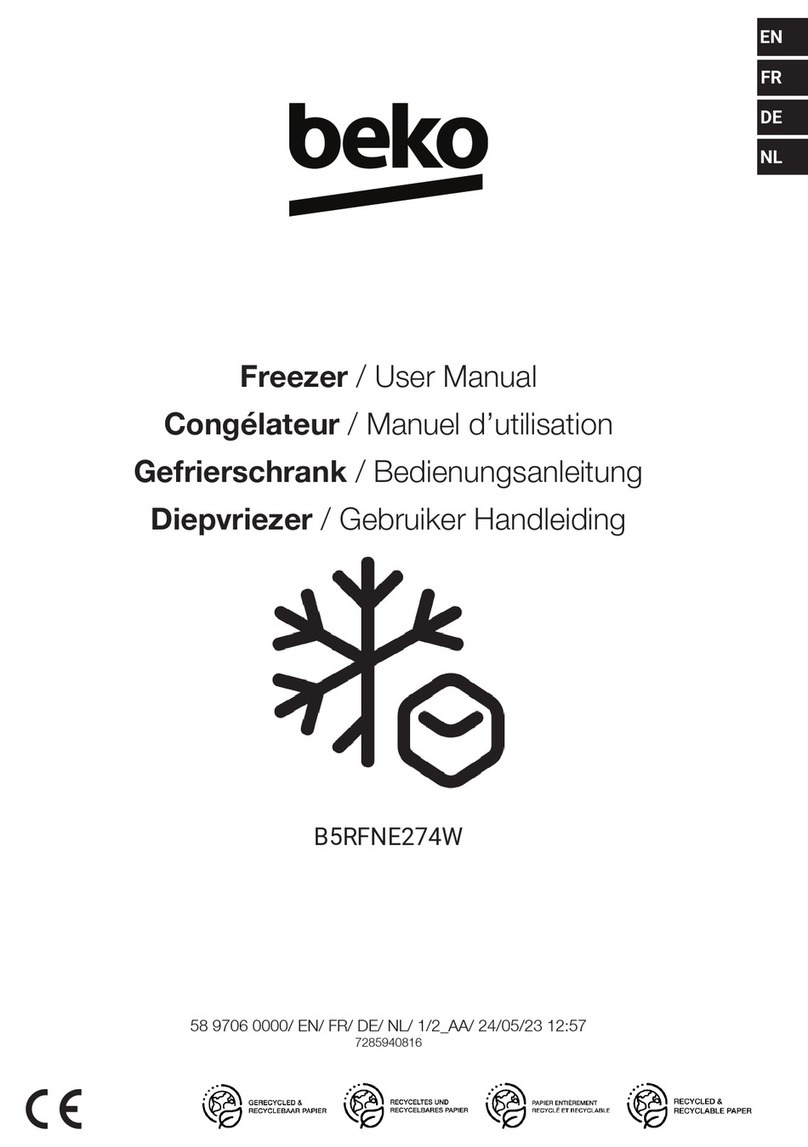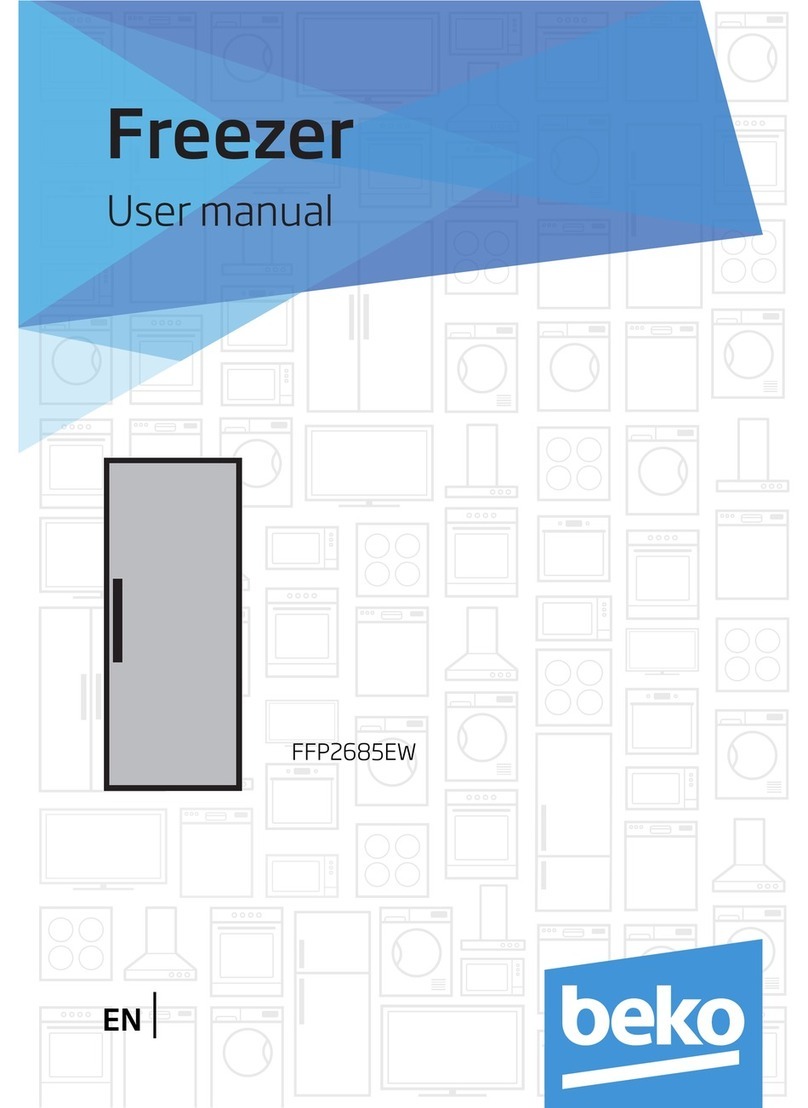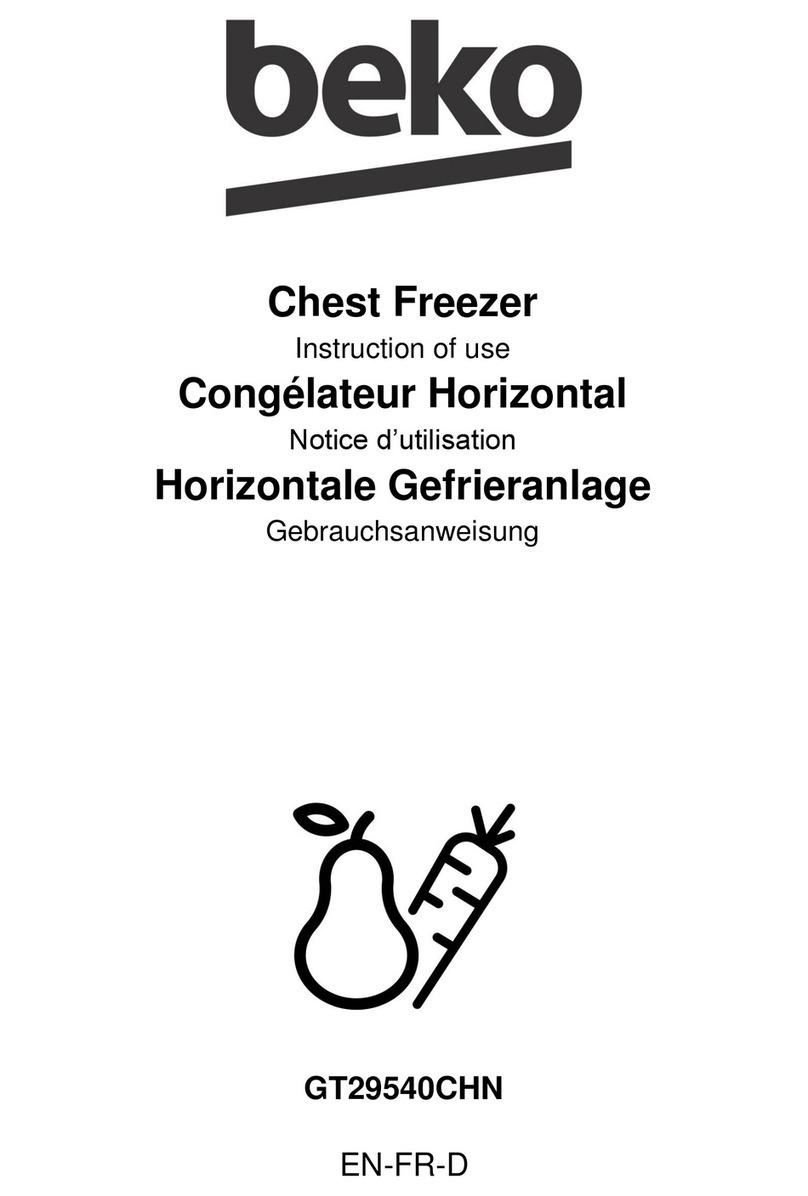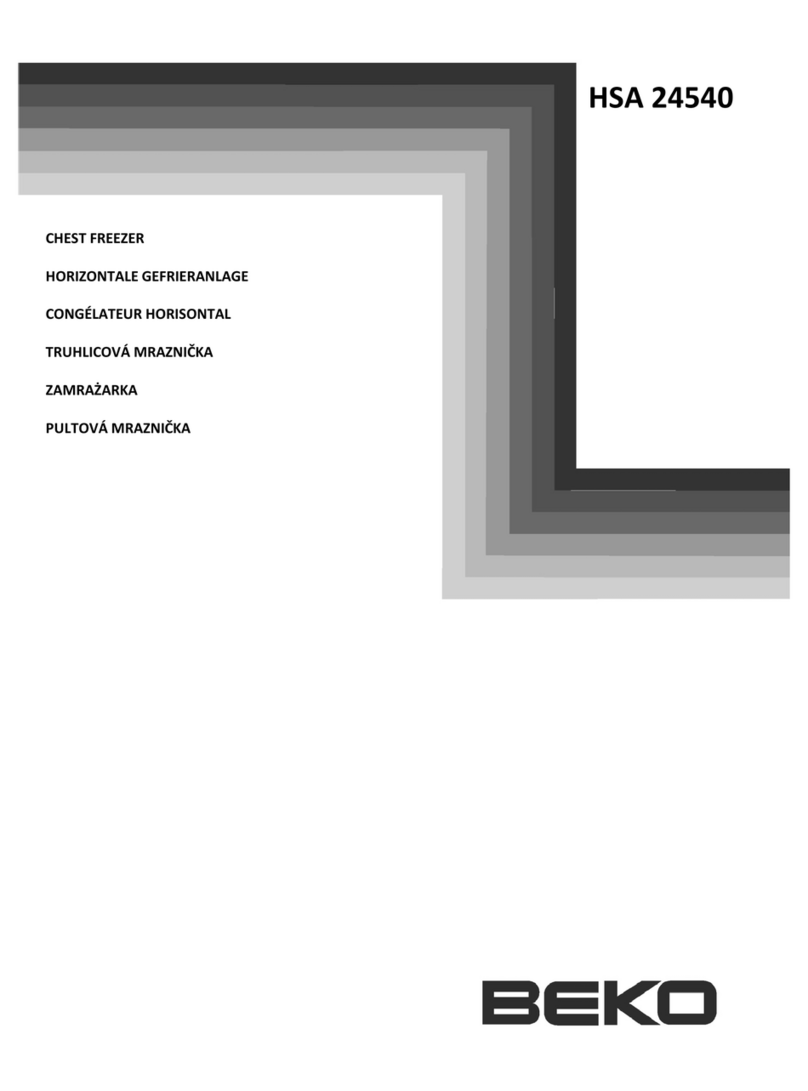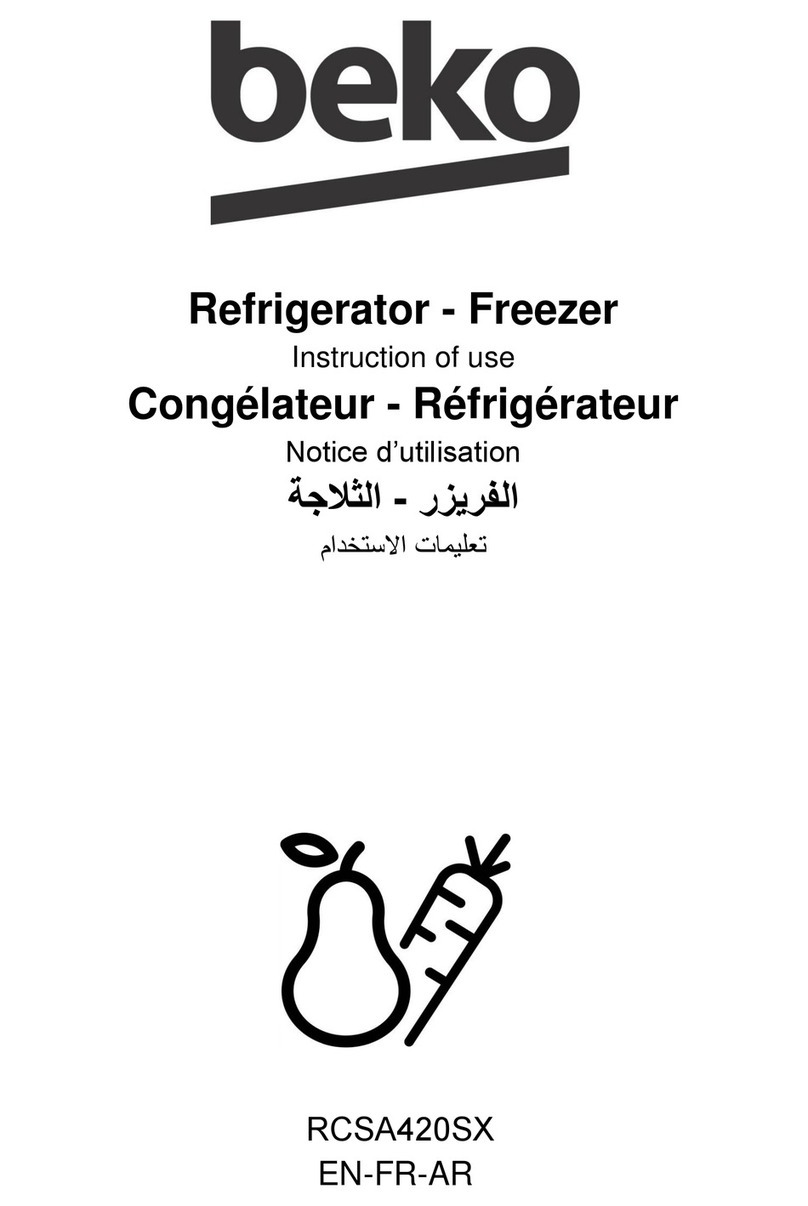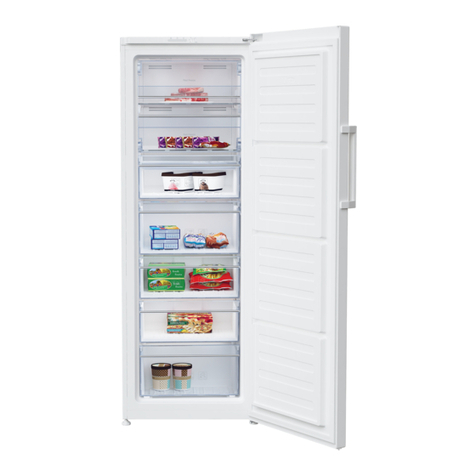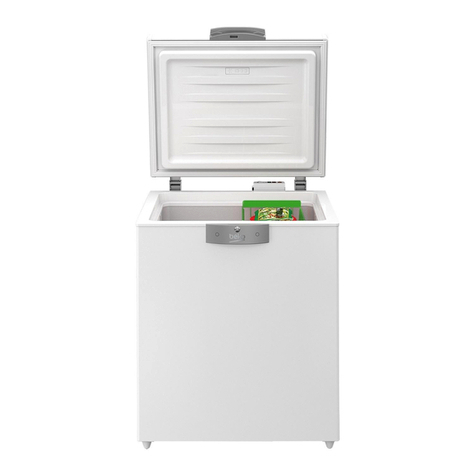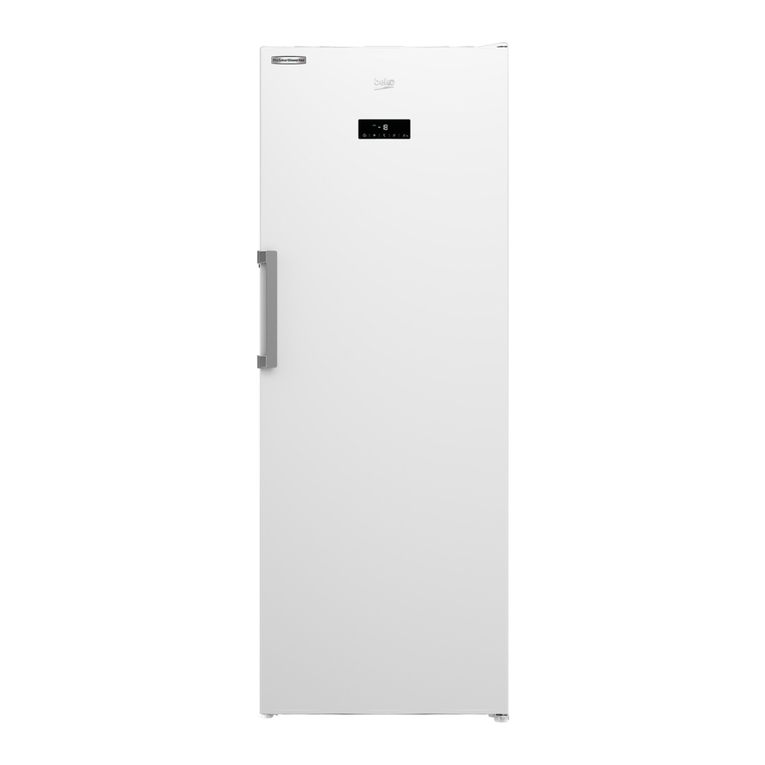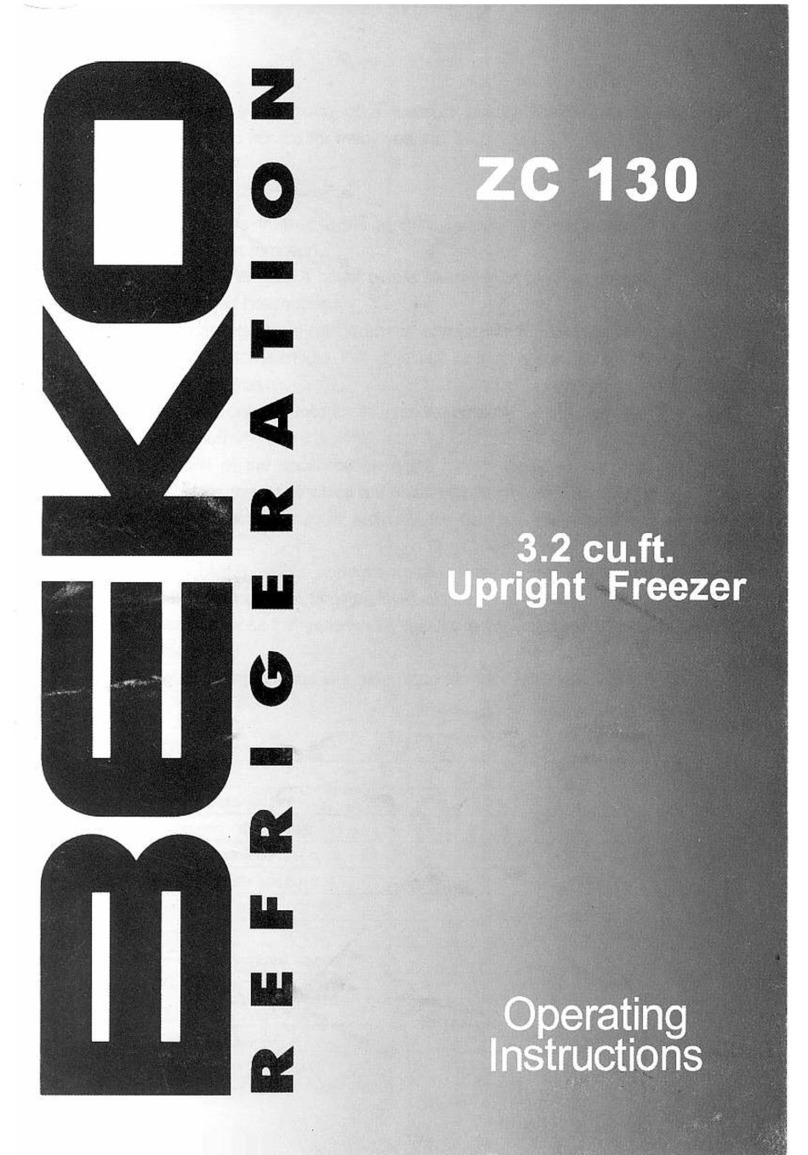EN
9
Child safety
• If the door has a lock,
the key should be kept
away from reach of
children.
• Children must be
supervised to prevent
them from tampering
with the product.
Compliance with WEEE
Directive and Disposing of
the Waste Product:
This product complies
with EU WEEE Directive
(2012/19/EU). This product
bears a classification
symbol for waste electrical
and electronic equipment
(WEEE).
This product has been manufactured
with high quality parts and materials
which can be reused and are suitable
forrecycling.Therefore,donotdispose
the product with normal domestic
waste at the end of its service life.
Take it to a collection point for the
recycling of electrical and electronic
equipment. Please consult your
local authorities to learn the nearest
collection point. Help protect the
environment and natural resources by
recycling used products. For children’s
safety, cut the power cable and break
the locking mechanism of the door, if
any, so that it will be non-functional
before disposing of the product.
Package information
Packaging materials of the product
are manufactured from recyclable
materials in accordance with our
National Environment Regulations. Do
not dispose of the packaging materials
together with the domestic or other
wastes. Take them to the packaging
material collection points designated
by the local authorities.
Do not forget...
Any recycled substance is an
indispensable matter for nature and
our national asset wealth.
If you want to contribute to the
re-evaluation of the packaging
materials, you can consult to your
environmentalist organizations or the
municipalities where you are located.
HC warning
If your product's cooling system
contains R600a:
This gas is flammable. Therefore, pay
attention to not damaging the cooling
system and piping during usage
and transportation. In the event of
damage, keep your product away from
potential fire sources that can cause
the product catch a fire and ventilate
the room in which the unit is placed.
Ignore this warning if your
product's cooling system contains
R134a.
Type of gas used in the product is
stated in the type label which is on the
left wall inside the refrigerator.
Never throw the product in fire for
disposal.
